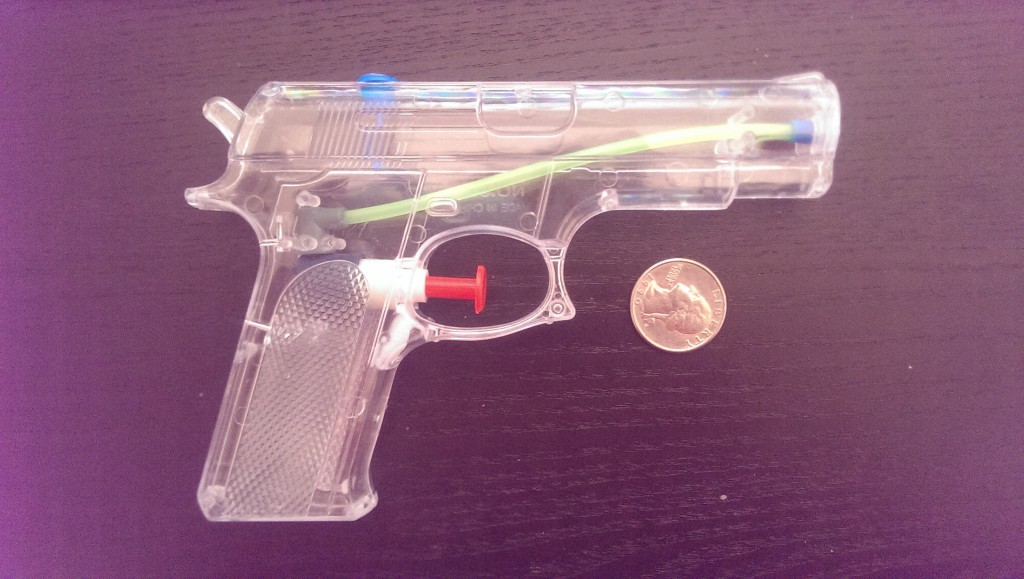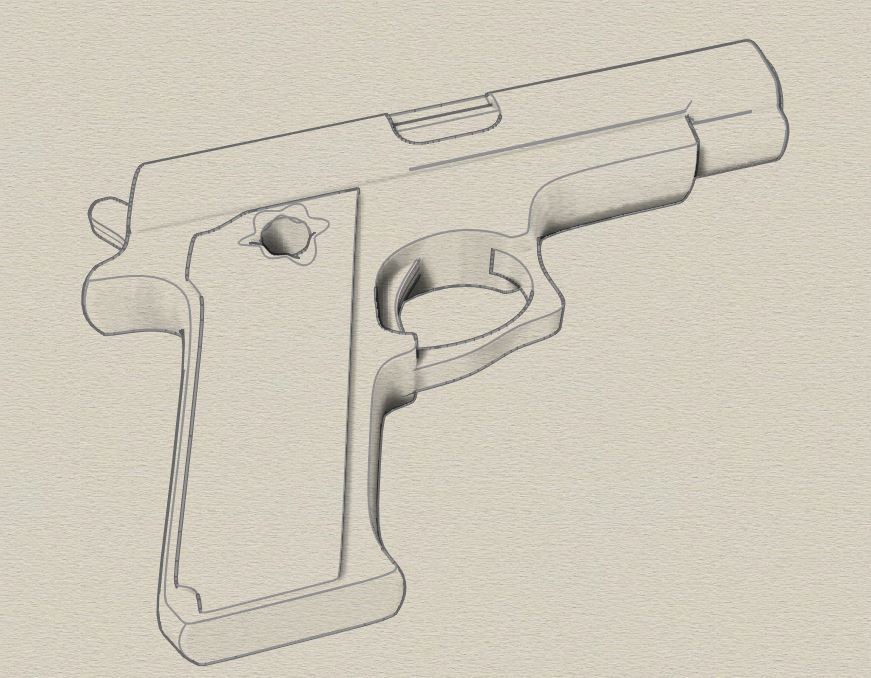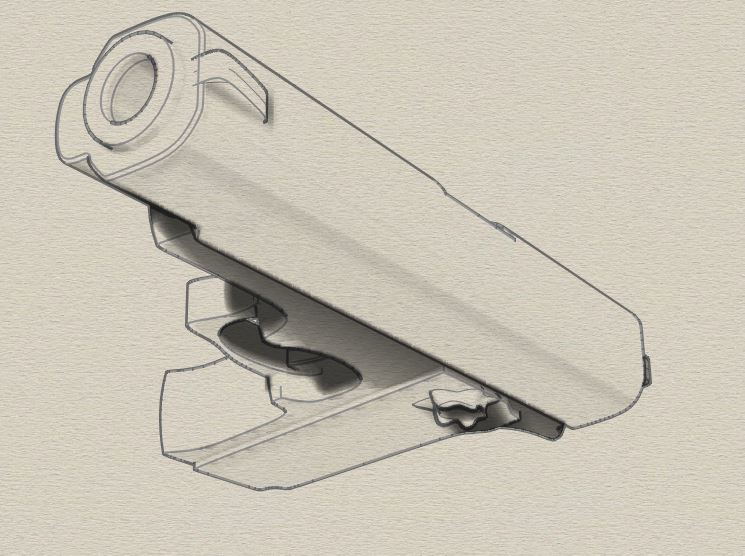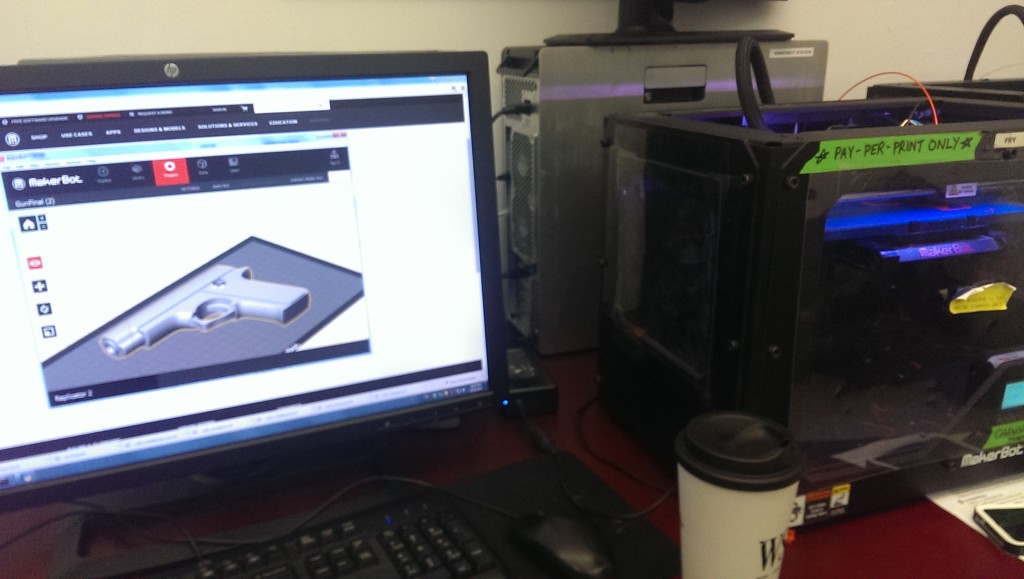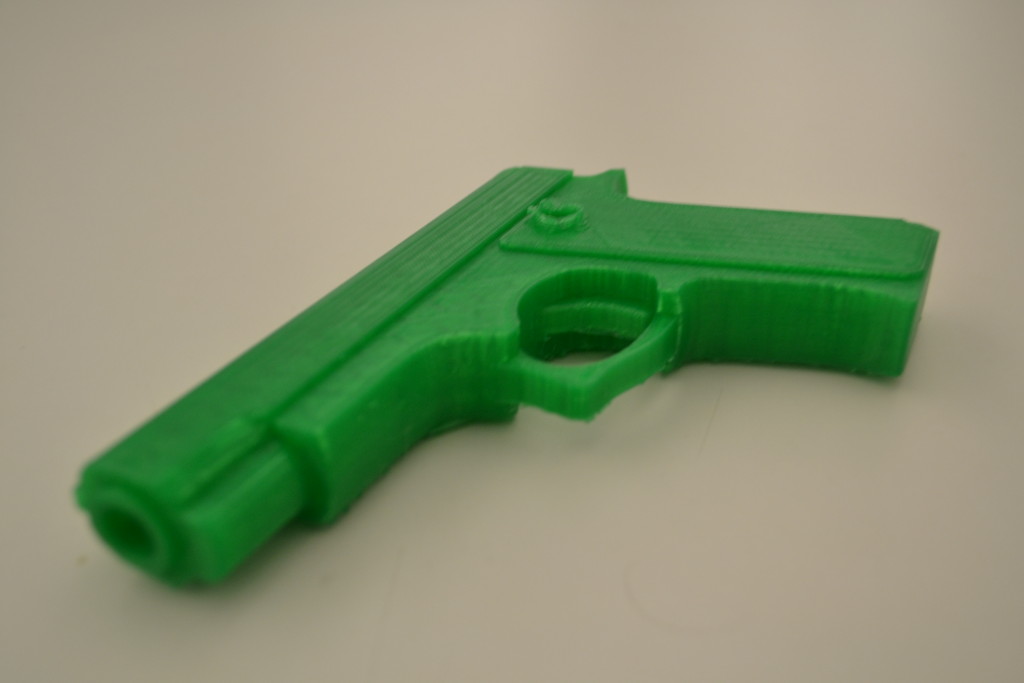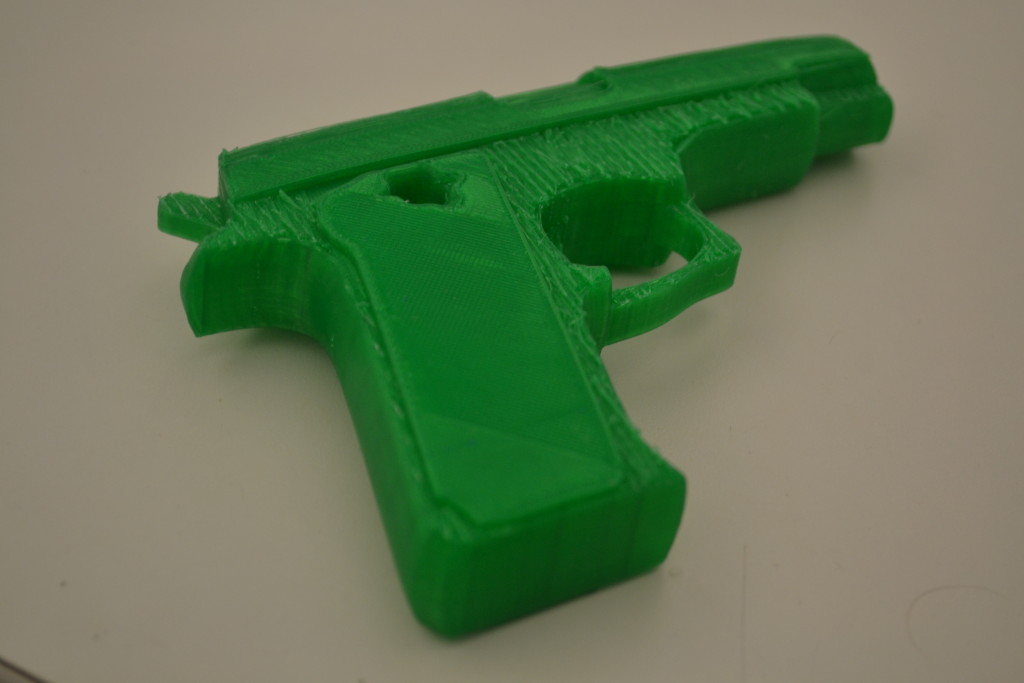Shot.Gun. // Bryan // Object-with-a-Twist
I took inspiration from the furor over 3D-printed guns.
I created a model that aims to capture both our cultural fascination with the power of guns — including the manufacturing craft that goes into them — and their inherent violence.
Even toy guns are illegal in New York, so I ordered a clear plastic squirt gun and derived my model from that:
I created my model in Rhino using mostly lofted curves. Then I modified this smooth, clean-lined, human-designed machine by putting a violent, asymmetrical bullet hole through the middle of it.
Then I printed it. The first attempt failed:
Here’s the final version (created on the second 3-D print).
Now my artistic take on this:
First, in this print the gun and its consequences are fused. In American discourse, many voices try to detach these things: the “right to bear arms” is often discussed without acknowledging the threat of violence that bearing arms entails. But here, you can’t have one without the other. You can’t admire the gun without recognizing what guns are designed to do.
Second, it’s a 3D printed gun, but it doesn’t actually work. That’s kind of the point: regardless of how functional it is, the form itself provokes a very specific response. I chose this focus in part to push beyond knee-jerk reactions to the concept of printed personal firearms or other “un-PC” 3D prints.
Many of the loudest champions of 3D printing praise its potential for revolutionary individualism and “disruption” only to the extent that such individuals are 3D-printing objects that aren’t really “disruptive” to current power structures.
So I’ll close with this quote from George Orwell in “You and the Atomic Bomb” — as his provocative take on an earlier generation of small arms echoes, in an odd way, some of the rhetoric of the techno-utopians who praise (politically correct) 3D-printing.
“…tanks, battleships and bombing planes are inherently tyrannical weapons, while rifles, muskets, long-bows and hand-grenades are inherently democratic weapons. A complex weapon makes the strong stronger, while a simple weapon — so long as there is no answer to it — gives claws to the weak.”

